Pythia, priestess of Apollo at Delphi, commonly known as the Oracle of Delphi, was one of the most important oracles of Greek antiquity. In classical Greece, an oracle was a person considered to provide insightful advice or prophetic predictions, inspired by the gods. It was, of course, a form of divination.
Why were oracles so famous in ancient times? Because they were believed to help armies and empires in times of need. Croesus, king of Lydia, consulted Delphi before attacking Persia in 546 BC, and was famously advised: “If you cross the river, a great empire will be destroyed”. The Oracle was right, and Croesus lost his empire.
Times have changed. New oracles use data, instead of magic. Data mining, predictive sales analytics and artificial intelligence. Technology has gone a long way ever since. Sales leaders do not need divination to predict sales.
Why are ERP and CRM sales data mining a better Oracle in B2B sales?
There are several lessons a B2B sales leader can learn from Croesus’s story. First, ask your Oracle the most pressing questions: “where should we attack?”, “what will happen if we do?”. In modern data mining terms, sales leaders should ask business questions with the highest impact on their sales performance.
Second, regardless of the many specific sales data mining algorithms and techniques developed over the years, there are only a handful of fundamentally different types of methods that help a B2B sales team to sell more. If sales managers want to dig the gold that it’s sleeping in their sales data, they need to know this top five data mining methods.
A sales team is one of the most valuable resources that a B2B organisation has. Improving sales efficiency and accelerating sales offers tremendous benefits to its company. Here plays data mining a crucial role.
Supervised vs Unsupervised data mining methods for ERP and CRM data
Before we present our data mining methods finalist, let’s introduce an essential concept of data mining: supervised and unsupervised methods. Consider two similar questions about B2B customers. The first is: “do customers naturally fall into different groups?” Here, we have not specified any purpose or target for the grouping. When such a goal is missing, the data mining method is known as “unsupervised”.
Contrast this with two slightly different questions: “Are there groups of customers that have an unusually high likelihood of buying more?”, or “Where are the customers at risk of churning?” For example, in these last questions, a target was clearly defined: will customers accept a new offer or stop buying? In contrast to the paragraph above, we segment now with a specific goal: to act and visit the customer based on the probability of churning. Segmenting customers, clustering them or simply mining sales data with a specific goal is called a supervised data mining problem.
The difference between these questions seems minor but is very important. If there is a target, data scientists can undertake the problem as a supervised one. Supervised tasks require different techniques than unsupervised do, and the results are often more useful. The application of machine learning to unsupervised data mining tasks enables artificial intelligence in sales.
However, to perform a supervised data mining method, a technical condition should be satisfied: there must be data on the target. For example, if a sales leader wants to know which customers will accept an offer for a new product, she needs to identify other clients who have already taken that offer. Data scientist define these customers as “positives cases”. If there are no such cases, sales managers can guess them for a start.
1) Data Mining Method: Regression (or “value estimation”)
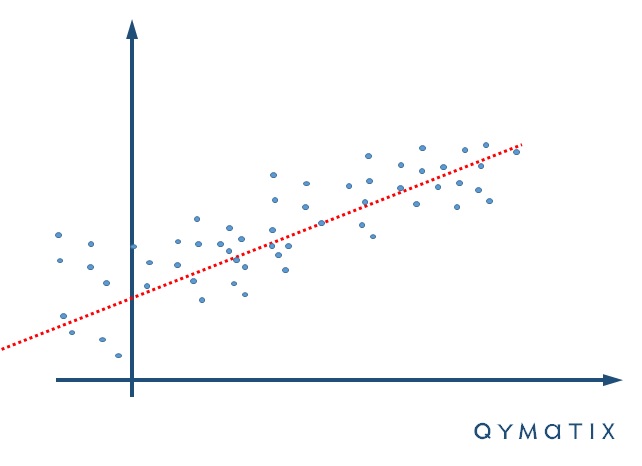
Type: Supervised
Business Question Example: “how much will our customers buy next quarter?”
Sales Data – Example: sales per customer per month from the ERP system.
How does it help to sell more? Example: a sales forecast using regression helps to set realistic sales goals and so to motivate a sales force more effectively.
A regression sales data mining method attempts to predict or estimate a numerical value for some given variable, in this example, the total revenue per customer. Sales managers can develop an efficient data analysis model by looking at all customers and their historical ERP sales transactions. Regression estimates the total revenues of the following period using this sales data.
The most used type of regression is linear. Linear regression is relatively straightforward to calculate. Sales managers can calculate a liner regression themselves using MS excel. Using linear regression to estimate sales goals, sales leaders can provide a sales force with fair, realistic and maybe yet ambitious targets.
Setting realistic sales targets generates an environment where the sales team becomes more engaged and more productive.
2) Data Mining Method: Classification or class probability estimation
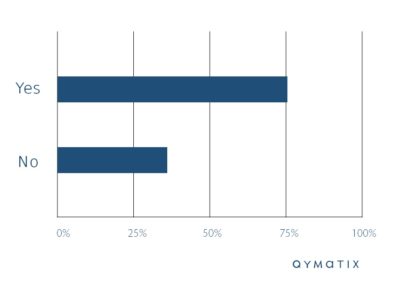
Type: Supervised
Business Question Example: “will this customer place an order if visited?”
Sales Data – Example: a combination of ERP and CRM sales data.
How does it help to sell more? Example: key account managers focusing on the customers with highest chances of placing orders in each period improves the closing rate.
Classification is, in a sense, related to regression, but the two are different. Informally, classification predicts whether something will happen, whereas regression predicts how much of it will happen.
An example of a data mining method for a classification problem is to classify accounts based on whether they will buy or not if visited. Since visiting a customer is a relatively expensive action in B2B, Key Account Managers should focus on accounts with a higher probability of placing an order.
In this example, the data mining method will create two classes, “will buy” and “will not buy”. This model predicts to which class each account belongs. The application of this data mining technique accelerates sales by focusing limited resources on the most promising accounts.
3) Data Mining Method: Clustering
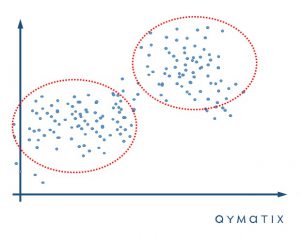
Type: Generally unsupervised
Business Question Example: “do we have segments of customers at risk of churning?”
Sales Data – Example: ERP sales transactions. CRM data can be used to improve the model.
How does it help to sell more? Example: by reducing or avoiding customer attrition, customer retention and sales results can be significantly improved.
Clustering attempts to group customers by their similarity, usually not driven by any specific purpose. In a handy case, an unsupervised data mining clustering can discover if there are segments of accounts at risk of churning. Clustering offers a sales leader a valuable input for decision-making, focus and prioritisation.
Since regaining a lost customer in B2B is usually a costly matter, discovering churn risk with clustering accelerates sales by avoiding wasted resources. This sales data mining method, combined with machine learning offers exceptional good results for predictive sales analytics.
I would like to use some of these predictive sales methods today.
4) Data Mining Method: causal modelling
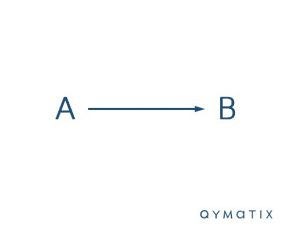
Type: Supervised
Business Question Example: “is there a causal relationship between sales actions and improved sales results?”
Sales Data – Example: CRM sales activities. ERP data can improve the model
How does it help to sell more? Example: sales leaders can identify the kind of sales actions yielding the best results.
Causality implies a cause-and-effect principle. Causal modelling helps a sales leader to understand what kind of events or sales actions influence sales results. For example, consider the use of predictive modelling to target different customer segments with sales visits or calls.
A sales leader can, for example, observe whether indeed a targeted segment purchase at a higher rate after having been targeted. Was this because the visit or call influenced the accounts to buy? Or did the predictive model do an excellent job identifying those accounts which would have placed an order anyway?
Sales managers should view data mining methods for causal modelling as “counterfactual” analysis: they attempt to explain what would be the difference between opposing sales actions, were to happen and were not to happen.
This kind of predictive analytics accelerates sales by discovering the apparent relationship between sales activities and sales results.
5) Data Mining Method: Profiling
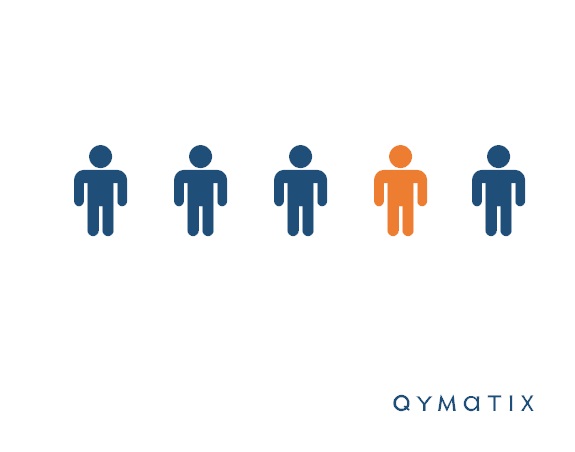
Type: Unsupervised
Business Question Example: “what is the typical behaviour of our most successful key account managers?”
Sales Data – Example: mainly CRM. ERP data can, in some cases, help to improve the model.
How does it help to sell more? Example: sales leaders can identify the most successful behaviours and then create targeted incentives.
Profiling (also known as behaviour description) can be used to characterise the typical behaviour of a successful key account manager or sales representative. Behaviour in sales seldom has a simple description; offers sent, the number of follow-ups after offers, the number of visits, customers visited, time of sales calls, usage of social media to support sales activities and so on.
For example, if a sales leader knows that her most successful key account managers only make a reduced but aimed number of visits, she can put in place incentives based on quality. Putting the focus on the quality of a targeted number of sales visits will, in turn, accelerate sales.
CALCULATE NOW THE ROI OF QYMATIX PREDICTIVE SALES SOFTWARE
The Top 5 ERP Sales Data Mining Techniques You Need in B2B Now – Conclusion.
Just as kings and emperors ominously revered oracles centuries ago, so should data mining for predicting sales today. In this article, we presented the top five supervised and unsupervised data mining techniques for sales in Business-to-Business.
Each of these data analysis techniques can be used to answer a different sales question, depending on the kind of data and the business goal of the analytical exercise. There are different fields of application in B2B sales, such as cross-selling, customer churn and attrition or pricing analytics.
Regression, classification, clustering, causal modelling and behaviour description are top five data mining techniques in B2B sales. Sales managers can apply them using their ERP and CRM data to increase customer lifetime value.
Do you have any further questions on Predictive Sales Analytics? We are happy to help!
Free eBook for download: How To Get Started With Predictive Sales Analytics – Methods, data and practical ideas
Predictive analytics is the technology that enables a look into the future. What data do you need? How do you get started with predictive analytics? What methods can you use?
Download the free eBook now.
- We will use this data only to contact you for discussing predictive sales KPIs. You can read here our declaration on data protection.
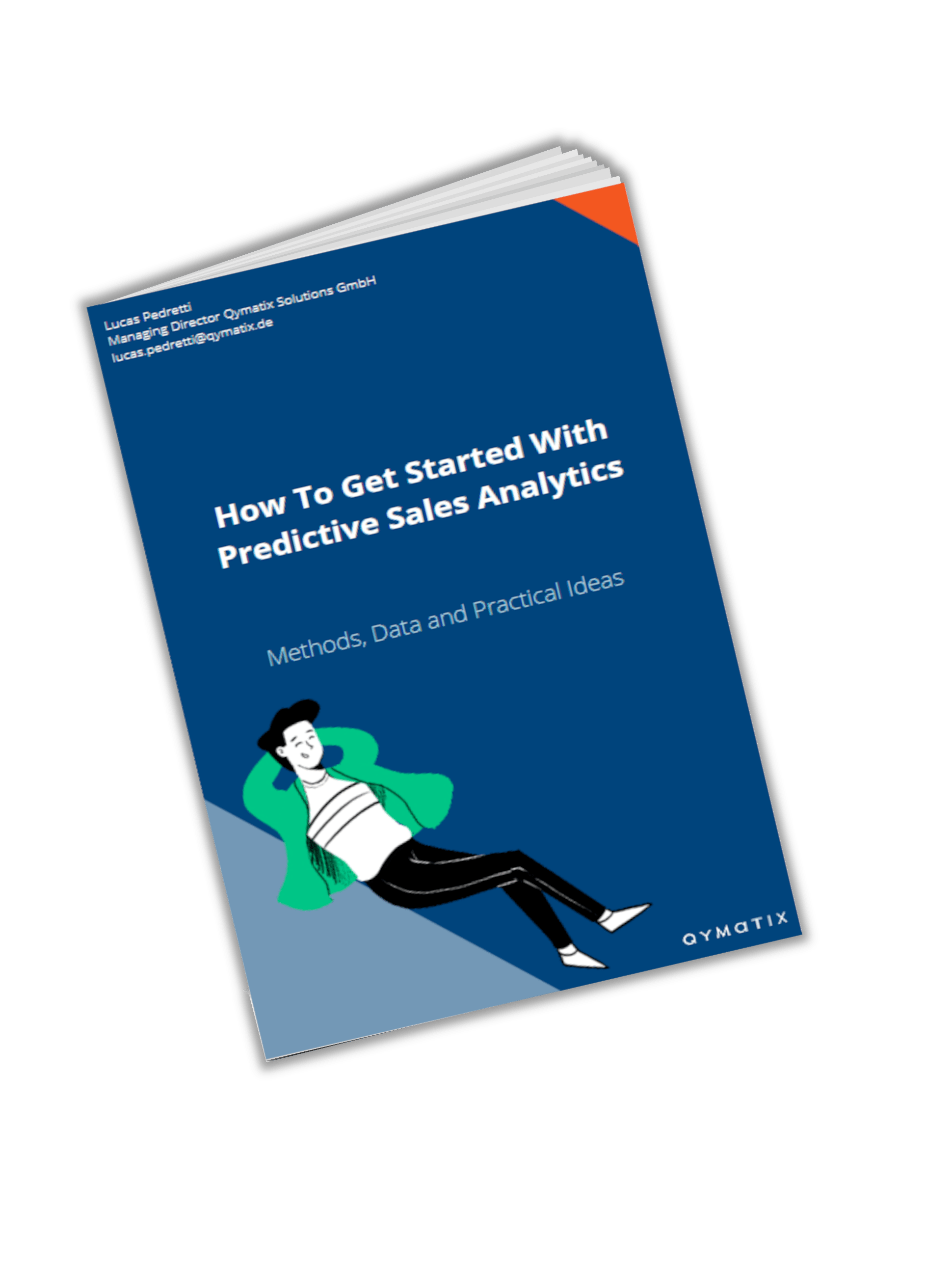
Further Read:
Analysis & Prediction of Sales Data in SAP ERP System Using Clustering Algorithms
The Effects of Data Mining in ERP-CRM Model – A Case Study of Madar
Big data and predictive analytics in ERP systems for automating decision making process
Header Image: John Collier (1850–1934) – Priestess of Delphi
Also Interesting:
Are you a sales manager with Big Data? Here are three Predictive Analytics examples for B2B
https://import.qymatix.wp-star.com/en/how-to-profit-from-big-data/
